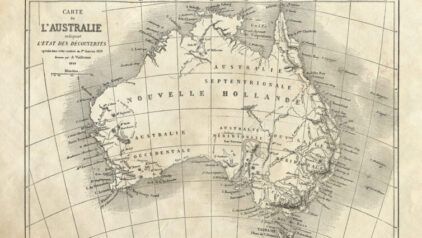

One of the most exciting ways to explore family history can be through fictional family trees – and there’s perhaps no more magical genealogy to explore than the family of Harry Potter. Hogwarts, Muggles, Platform 9 and ¾ at King’s Cross Station, and the Wizarding World, brought to life by J.K. Rowling, are filled with intricate connections that make the spark of magic possible in the real world.
With expansive lore and a dedicated fanbase, the families of Harry Potter’s universe are also filled with surprising ancestry, lineage twists, and unexpected connections that make tracing this fictional family tree fascinating and fun. Whether you’re a lifelong fan or just curious about how fictional genealogy can inspire your own family research, the Potter family tree provides plenty of magical inspiration to explore.
Who’s Who in the Potter Family Tree?
At the center of the tree, of course, is Harry James Potter himself: The Boy Who Lived, hero of the wizarding world, and a young wizard who learned about his magical legacy only when he turned eleven while living with the Dursleys (Muggles that they were).
Now, here’s a look at Harry’s immediate family and a few important ancestors:
Immediate Family
- James Potter: Harry’s father, a talented wizard known for bravery, a mischievous streak, and profound loyalty to friends. He was tragically killed protecting his family from Lord Voldemort.
- Lily Evans Potter: Harry’s mother, whose kindness, bravery, and powerful magic provided Harry with protective enchantments that ultimately saved his life. Lily’s courage echoes throughout the series, highlighting themes of love and sacrifice.
Key Ancestors and Relatives
- Ignotus Peverell: An ancestor whose invisibility cloak was passed down through generations, eventually becoming Harry’s prized possession and pivotal in his victory against Voldemort.
- Fleamont Potter and Euphemia Potter: Harry’s grandparents on his father’s side. Fleamont was known for inventing the Sleekeazy’s Hair Potion, adding a quirky detail to Harry’s ancestry.
- Charlus Potter and Dorea Black: Often debated by fans but commonly placed as distant relatives – highlighting how intertwined wizarding families can be.
Connected Families
- The Weasley Family: Harry’s close friends and eventual family through marriage (to Ginny Weasley). Their lineage includes multiple generations of famously red-haired witches and wizards known for loyalty, bravery, and a deep sense of justice.
- The Black Family: A historically prestigious wizarding family, deeply tied to many pivotal events throughout the series. Sirius Black, Harry’s godfather, is a beloved figure who offers Harry emotional connection and family bonds beyond blood.
Why Create a Fictional Family Tree?
Like reading expands our minds to new ideas, tracing a fictional lineage can help you better understand your own. It highlights how details – like professions, heirlooms, and personality traits – shape family identity.
By mapping these fictional relationships, you gain insight into the real importance of storytelling in genealogy. Sometimes we find stories we’re proud of, others we’re not, but the real value is discovering connections, legacies, and the threads that tie generations together.
Like many other pop culture phenomena, fans of the Harry Potter universe often debate minor characters and distant relatives in online forums, a process surprisingly similar to real-world genealogical discussions. These explorations remind us that every family tree – real or imagined – has quirks, mysteries, dark secrets, and hidden heroes.
Family Stories that Stay With Us
Exploring Harry Potter’s family tree is the opportunity to dive deeper into a beloved fictional universe and exercise your storytelling legs, curiosity, and imagination. Whether you choose to trace the Potters, the Weasleys, or your own ancestors, the journey through family connections is always magical in its own way.
If you’re curious about building your own tree – fictional or real – family tree tools like those at MyHeritage allow you to illustrate your connections, add personal stories, or map out family narratives, letting you explore the past branch by branch.










